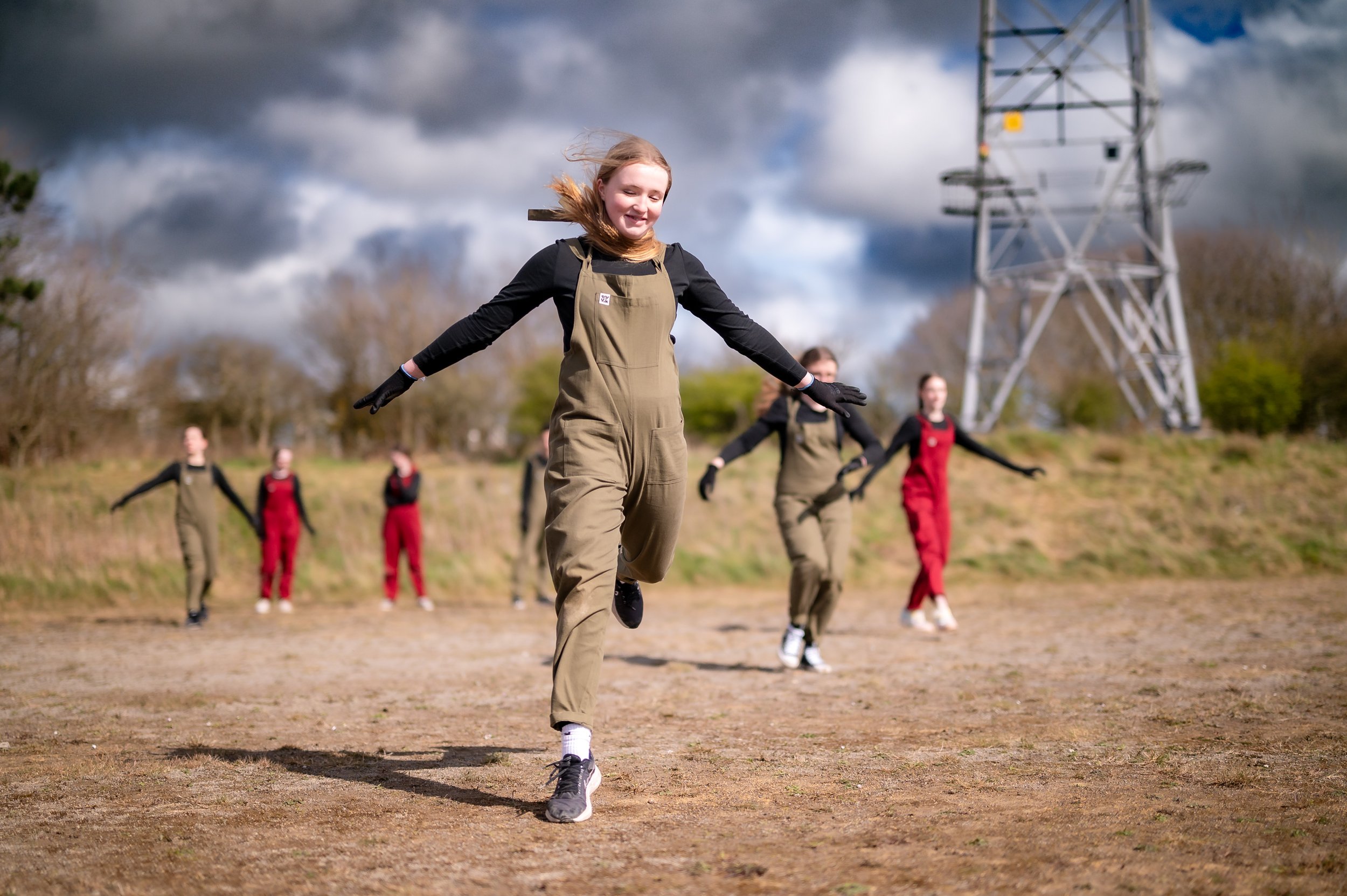The Whitehaven Academy

DATE:
2023 / 2024
LOCATION:
The Whitehaven Academy, Whitehaven
PARTNERS:
The Whitehaven Academy
The Knotted Project
Fibrus Broadband
Case studies >> The Whitehaven Academy
Pupils create a ‘Cumbrian Savannah’
Aims
Enhance natural resources in school grounds and support increases in local biodiversity.
Provide opportunities for long-term engagement of young people in nature-based learning through in-situ monitoring and surveys.
Provide spaces for creative engagement of young people in spaces with richer biodiversity.
Facilitate a creative arts engagement programme with students, developing their relationships with natural spaces.
The Whitehaven Academy, a local secondary school, wanted to develop its vast outdoor spaces to enhance pupils’ health, well-being and learning outcomes. The 18-month project has seen Raise foresters work with the school’s eco-committee to co-design a multipurpose planting scheme. The scheme includes the creation of 7 hectares of woodland with 526 trees planted and an estimated 590 – 6500 trees naturally regenerated over the next 15 years. It also includes amenity tree planting to develop spaces for creative engagement, the establishment of a fruit orchard and a naturally recolonising ‘Cumbrian Savannah’.
Students also worked with The Knotted Project to create a short performance piece in response to their surroundings and their feelings about the environment.
The project has also been supported by internet broadband provider Fibrus, who donated trail cameras that will allow students to study the changing ecology of the site and contributed volunteer hours towards helping with the planting.
The site originally came to the attention of the community forest through a personal introduction from a partner contact. Once the headteacher became acquainted with the idea of the community forest, he jumped at the opportunity to work with the Raise team and immediately got the faculty and student body on board. The project cuts across several areas of the curriculum meaning multi-departmental buy in and collaboration.
Community and stakeholder involvement has been high, with neighbourhood consultation carried out through the EIA process. The entire scheme has been co-designed with the eco-committee and several year groups brought in to consult at multiple touch points. The Outdoor Learning classes have been instrumental in driving the project forward and have been involved from conception to completion. The team have worked with neighbouring properties to ensure that any planting scheme takes their needs into consideration and positively impacts their land as well as the school site.
The wider community will benefit through improvements to biodiversity and the subsequent positive impact on the environment. An improvement in the aesthetic appearance of the school grounds will also prove beneficial with the addition of green amphitheatres with sunken seating, football tree goalposts and a chamomile lawn with individual trees. A section of the land at the back of the project site will be accessible to the public. General awareness of the importance of woodlands and biodiversity will be increased through communication with the school, via the student body themselves and increased local media coverage.
Enhanced facilities will mean that there are more after school activities available for students providing places to congregate and reducing anti-social behaviour in the surrounding streets.
Access to a newly established fruit orchard in the grounds (which will be harvested for use in the school canteen) will promote healthier eating options and better nutrition.
Standout environmental benefits include an entirely nature driven habitat restoration through the creation of 5.91 hectares of ‘Cumbrian Savannah’. 11,000m of deer fence will be erected allowing space for trees to naturally recolonise with the ongoing monitoring and care from generations of future students.
16
Volunteers
526
Number of trees
7
Hectares of woodland planted
Project Impact
Contribution to Net Zero:
Trees, both planted (560) or naturally regenerated (up to 6500) will sequester carbon in their structure and in the soils beneath.
Engagement, Health and Wellbeing:
Long lasting opportunities for the school to engage their students in natural environments and develop their understanding of, and relationships with the natural world.
Enhanced spaces for recreation and creative engagement to stimulate health and well-being of students and staff.
Opportunities for outdoor learning (all year groups) which helps to maintain good physical and mental health of students.
420 students consulted and involved in co-design of scheme.
10 students and 3 staff involved in planting and maintenance.
Production of fruit in orchard (for use in school canteen) promotes healthy eating options and improved nutrition (all year groups).
Opportunities for volunteers to assist with planting – three corporate volunteers attended on the initial day of planting.
The Knotted Project worked with nine Y9 students to devise a creative performance which responded to their natural surroundings, exploring identity, building confidence and fostering pride and ownership. Shared with peer audience of 65 plus 3 corporate volunteers and 4 Raise Cumbria staff.
Employment and skills:
Long-term study of natural regeneration of woodland within school grounds provides opportunity for generations of students to engage in learning around natural process.
Increased awareness of green jobs and opportunities within the county.
Students and staff learning new practical skills in planting, maintenance, and management of woodland.
Infrastructural works delivered by local contracting company.
Innovative delivery practices:
Natural regenerationof land through exclusion of herbivores (deer fencing).
Co-design and delivery of the project with student run eco-committee supported by staff, Raise Cumbria and The Knotted Project including audio-visual performance piece devised, filmed, and shared with school and wider community.
Enhancing wildlife:
Natural regeneration of native woodland within school grounds, as well as a range of other biodiversity improvements on brownfield site.




